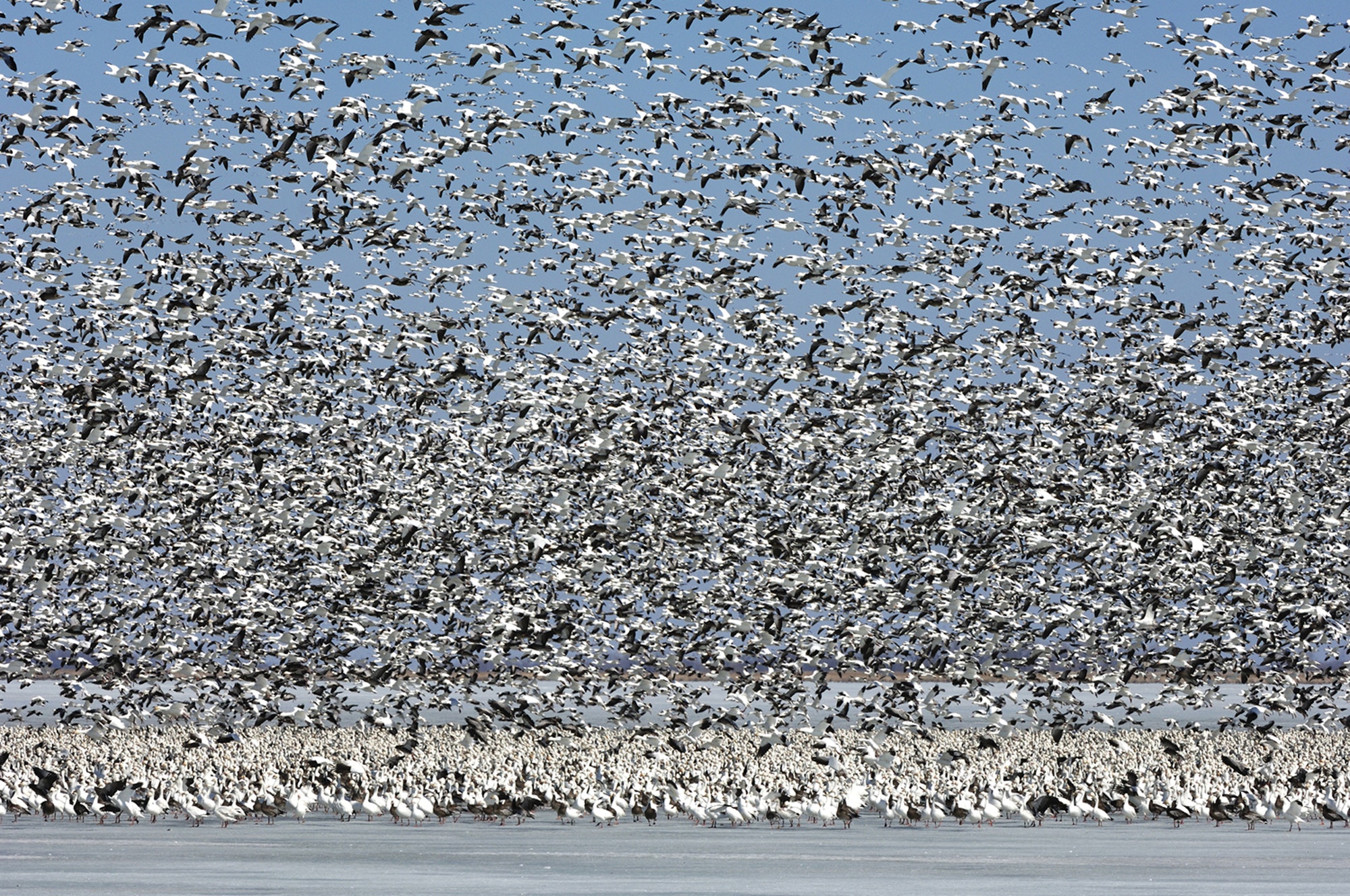How climate extremes influence migration phenology?
 |
Have you ever noticed that the buds sprout new leaves in the spring and the leaves fall in the late autumn? Or have you noticed that the birds come when the weather gets warmer and fly away when it turns colder? All these phenomena are the cyclic responses of animals and plants in the action of surviving the environment, the study of which we call it “phenology.” One important part of phenology is related to the annual cycle of migratory birds. As biologist Rubenstein put it, “bird migration, breeding, and nesting are timed every spring to coincide with the peak availability of critical food sources in a delicate synchronization that occurs across large latitudinal gradients and diverse habitats. This synchrony between birds and key resources helps to ensure that birds survive migration and successfully reproduce.”
Climate change plays a significant role in the migration phenology. In an article about avian migration phenology and global climate change, Dr. Cotton noted that the average arrival dates on breeding territories and departure dates for overwintering grounds had both advanced by eight days from 1971 to 2001 in Oxfordshire, which reflects adaptive responses of birds to global climate. Furthermore, these reactions vary across migration distance of birds: short-distance migrants show more flexibility to adjust the timing of migration than long-distance migratory birds.
Current predictive models of migration mainly focus on the average climate change over a long period. However, the knowledge of how climate extremes - episodes during which the adaptive capacities of the system are suddenly and considerably surpassed- affect the responses of birds may contribute to our deeper understanding of the relationship between climate and migration.
Dr. Sorte, together with his colleagues from the Cornell Laboratory of Ornithology has released a study published on Ecosphere investigating the influence of an extreme warming event happening in 2012 on North American migratory bird populations. Based on occurrence data for 353 bird species whose breeding ranges were located in North America from 2010 to 2014, the research team found that short-distance migratory birds whose breeding and winter ranges intersect the mid-latitudes advanced their spring migration during March, while long-distance migrants whose breeding and winter ranges were widely separated had lower occurrences in the summer in association with the decreased ecological productivity - the rate of generation of resources in an ecosystem. As noted by Dr. Sorte, the influence of climate extremes is not ubiquitous as the majority of birds examined in the study didn’t generate significantly different responses.
The various behavior patterns of bird populations may be explained by different mechanistic cues that trigger the migration, as mentioned in the study. For short-distance birds whose winter ranges are located in higher latitudes, they rely more on environmental cues (e.g., ecological productivity) to initiate the migration. Thus, the increased temperature due to climate extremes leads to an increased level of ecological productivity in the winter territory of short-distance migrants, which triggers an earlier date of migration. However, for the long-distance birds that winter in lower latitudes, their migration is initiated by photoperiod and endogenous circannual rhymes, which makes them only suffer limited influence of climate extremes.
 |
How could these findings influence our understanding of migratory birds? It is evident that we can detect a level of flexibility and resilience from short-distance migrants as they can adjust their migration phenology to adapt to the environment. But the climate extremes may put the long-distance migrants at disadvantage as they are more constrained by the endogenous factors, which leads to the population decline.
No man is an island, as poet John Donne put it, which can also be applied to describe the relationship between mankind and the earth. Under the context of global warm and increased climate extremes, the example of how climate extremes influence migratory birds warns us to act from now on to protect our environment, which benefits not only the earth, but also ourselves.
Reference
The implications of mid-latitude climate extremes for North American migratory bird populations
Avian migration phenology and global climate change
Migratory Bird Phenology in A Changing Climate
Climate change and population declines in a long-distance migratory bird